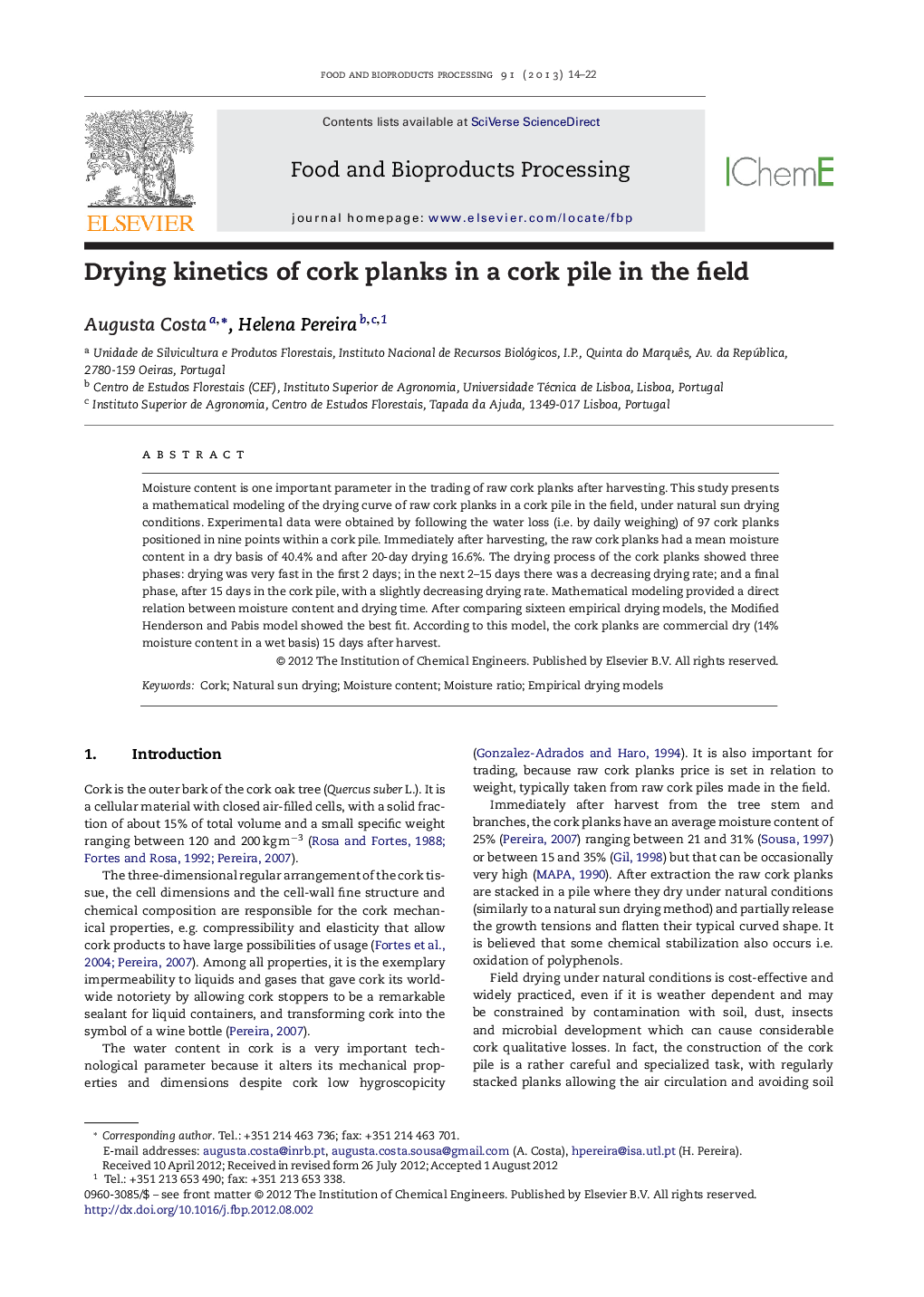| Article ID | Journal | Published Year | Pages | File Type |
|---|---|---|---|---|
| 19203 | Food and Bioproducts Processing | 2013 | 9 Pages |
Moisture content is one important parameter in the trading of raw cork planks after harvesting. This study presents a mathematical modeling of the drying curve of raw cork planks in a cork pile in the field, under natural sun drying conditions. Experimental data were obtained by following the water loss (i.e. by daily weighing) of 97 cork planks positioned in nine points within a cork pile. Immediately after harvesting, the raw cork planks had a mean moisture content in a dry basis of 40.4% and after 20-day drying 16.6%. The drying process of the cork planks showed three phases: drying was very fast in the first 2 days; in the next 2–15 days there was a decreasing drying rate; and a final phase, after 15 days in the cork pile, with a slightly decreasing drying rate. Mathematical modeling provided a direct relation between moisture content and drying time. After comparing sixteen empirical drying models, the Modified Henderson and Pabis model showed the best fit. According to this model, the cork planks are commercial dry (14% moisture content in a wet basis) 15 days after harvest.
► Moisture content is one important parameter of raw cork planks when trading. ► Knowledge on drying kinetics of cork planks under natural sun drying is lacking. ► The Modified Henderson and Pabis empirical drying model showed best fit. ► Raw cork planks were commercially dry only 15-days after harvesting. ► Solar dryers may have potential usage in drying cork fastening the drying period.
